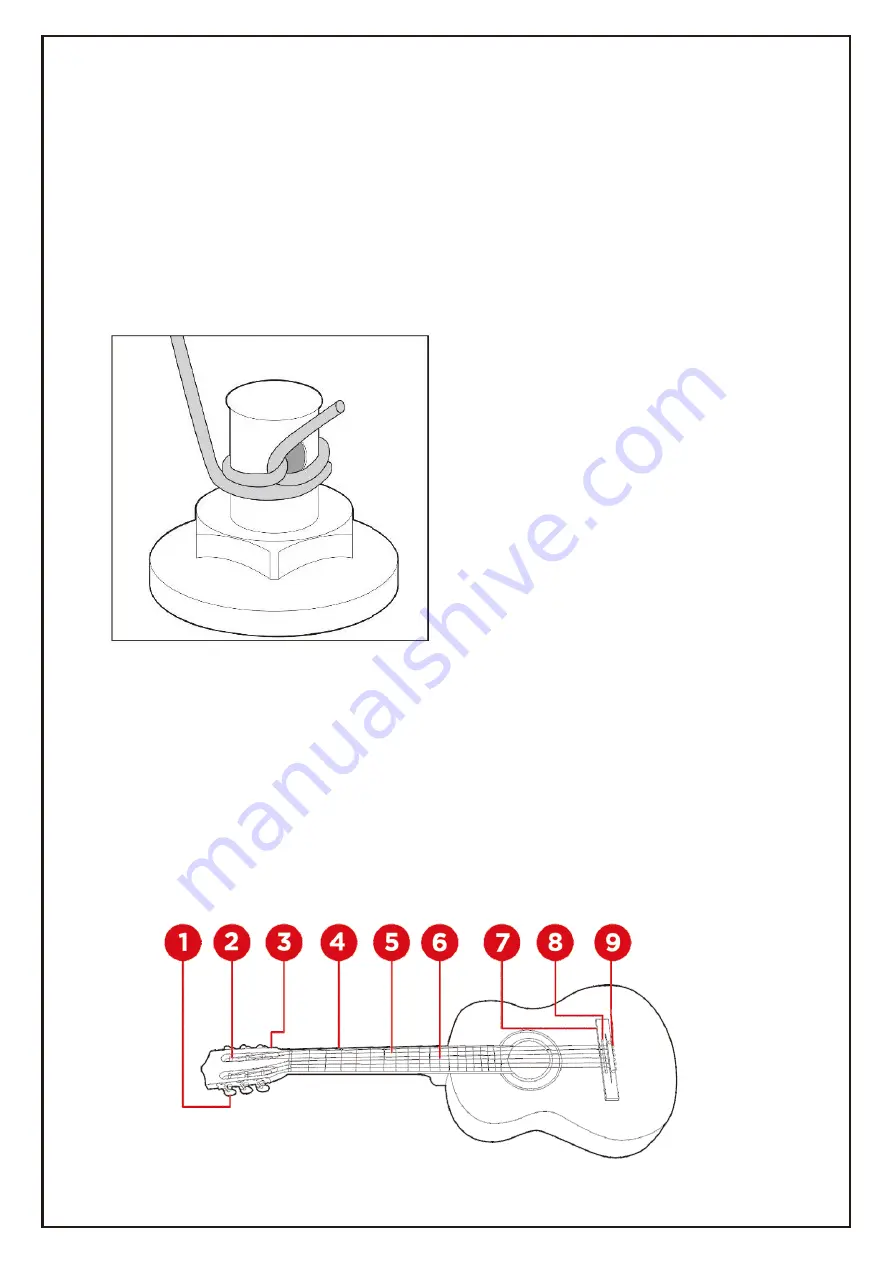
●Secure the string to the headstock via the tuning machine. To do so, make sure
the eye/hole of the tuning machine is parallel to the neck/headstock of the guitar.
Feed the string through the eye of the tuning machine and pull the string fairly taut.
The string should have a bit of slack (about 1-2 inches).
●While holding the string taut, secure it to the tuning machine by turning the
corresponding tuning peg to wrap the string around. For extra security, route the
string through itself on the initial wrap around (see diagram).
●For treble strings (G,B,E), wind the strings clockwise. For bass strings (E, A, D),
wind the strings counter-clockwise.
● Begin to tune the string by winding the
tuning peg until the desired sound is
produced. After reaching the desired tone,
pull the string lightly. The string will go
slightly out of tune. Readjust the tuning
peg until receiving the desired tone again.
Repeat the process a few more times. This
will ensure that your string will stay in tune
while playing.
● You may cut off the excess string, but it is
important to leave some excess still
attached (about ¼-1inch) in case the guitar
string needs to be restrung again.
Remember, it is easy to cut. more off later,
but impossible to add string back.
Dust and other foreign matter can harm the quality of your guitar. Make sure to
regularly clean and maintain your guitar, including around the tuning pegs and
bridge. To clean your guitar, use a dry, soft cloth. If desired, guitar polish can be
bought from any local music store. Do not leave your guitar exposed to the
sunlight or elements, and be aware that guitars are made of wood and are
therefore sensitive to changes in temperature, humidity, and altitude.
GUITAR CARE
1. Tuning Pegs
2. Tuning Machine
3. Headstock/Head
4. Neck
5. String
6. Fret
7. Bridge
8. Saddle
9. Bridge Pins
GUITAR ANATOMY
Summary of Contents for F20-004
Page 4: ......






















